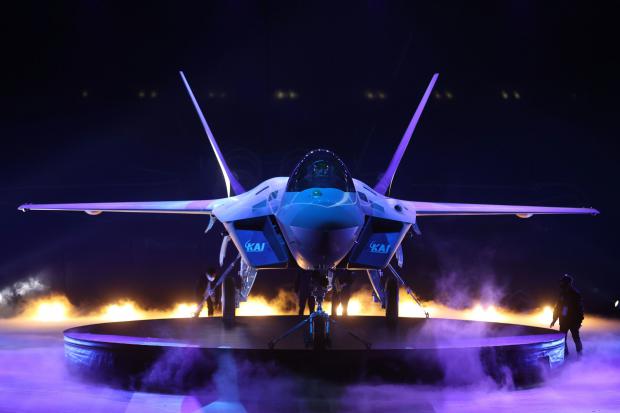
Breaking News
 Alex Jones Answers The Question: Is President Trump Preparing To Plunge America Into Martial Law?!
Alex Jones Answers The Question: Is President Trump Preparing To Plunge America Into Martial Law?!
 JUST IN: Texas Target Shooter Identified - Three People Fatally Shot, Including Child
JUST IN: Texas Target Shooter Identified - Three People Fatally Shot, Including Child
 Dana White Announces the White House Will Host a UFC Cage Fight
Dana White Announces the White House Will Host a UFC Cage Fight
 Texas Senate Officially PASSES New Congressional Map - Democrats STORM OUT in Protest (VIDEO)
Texas Senate Officially PASSES New Congressional Map - Democrats STORM OUT in Protest (VIDEO)
Top Tech News
 3D printing set to slash nuclear plant build times & costs
3D printing set to slash nuclear plant build times & costs
 You can design the wheels for NASA's next moon vehicle with the 'Rock and Roll Challenge
You can design the wheels for NASA's next moon vehicle with the 'Rock and Roll Challenge
 'Robot skin' beats human reflexes, transforms grip with fabric-powered touch
'Robot skin' beats human reflexes, transforms grip with fabric-powered touch
 World's first nuclear fusion plant being built in US to power Microsoft data centers
World's first nuclear fusion plant being built in US to power Microsoft data centers
 The mitochondria are more than just the "powerhouse of the cell" – they initiate immune...
The mitochondria are more than just the "powerhouse of the cell" – they initiate immune...
 Historic Aviation Engine Advance to Unlock Hypersonic Mach 10 Planes
Historic Aviation Engine Advance to Unlock Hypersonic Mach 10 Planes
 OpenAI CEO Sam Altman Pitches Eyeball-Scanning World ID to Bankers
OpenAI CEO Sam Altman Pitches Eyeball-Scanning World ID to Bankers
 New 3D-printed titanium alloy is stronger and cheaper than ever before
New 3D-printed titanium alloy is stronger and cheaper than ever before
 What is Unitree's new $6,000 humanoid robot good for?
What is Unitree's new $6,000 humanoid robot good for?
 "No CGI, No AI, Pure Engineering": Watch Raw Footage Of 'Star Wars'-Style Speeder
"No CGI, No AI, Pure Engineering": Watch Raw Footage Of 'Star Wars'-Style Speeder
South Korea's KF-21 fighter goes full beast mode

South Korea's KF-21 Boramae fighter is being reimagined as the KF-21EX, a stealthier, heavier-hitting evolution that blends homegrown design, deep-strike power and export ambition, giving Seoul a sovereign tool to strike deep, elude advanced air defenses and preserve a deterrent edge even if US support wavers.
This month, The War Zone (TWZ) reported that Korea Aerospace Industries (KAI) unveiled concept imagery of the KF-21EX, an upgraded KF-21 Boramae aimed at boosting survivability against enemy air defense systems.
The aircraft introduces twin internal weapons bays capable of housing 900-kilogram-class Joint Direct Attack Munitions (JDAMs), a critical improvement for penetrating hardened targets such as North Korean bunkers and command infrastructure.
Although KF-21 EX is not on par with the F-35's stealth profile, it includes a reprofiled canopy, a low radar cross-section (RCS) radome, an advanced electronic warfare suite and a new Electro-Optical Targeting System (EOTS).
KAI is also pursuing AI-enabled mission computers and expendable Digital Radio Frequency Memory (DRFM) decoys as options under study. It is intended to operate alongside South Korea's stealthy "loyal wingman" drones under the Manned-Unmanned Teaming (MUM-T) Combat System, with potential for a two-seat variant to coordinate drones and perform escort jamming.
The internal carriage mitigates the payload limits of accompanying drones, ensuring the manned fighter retains a heavy-strike option while minimizing radar signature. With 120 KF-21s planned for ROK Air Force service by 2032, it is still unclear whether the EX will supplement or replace part of that fleet. KAI's modular approach positions it as a flexible, export-ready platform.
The stealth upgrades, internal weapons bays and MUM-T integration give South Korea an indigenous deep-strike and air-superiority platform resilient to potential US capability gaps. As Washington and Seoul's alliance priorities diverge, the KF-21EX could become both a cornerstone of sovereign deterrence and a driver of South Korea's emergence as a global arms exporter.
The KF-21EX's internal bays reduce detectability, allowing strikes on hardened targets deep in enemy territory while cutting RCS, improving survival odds in dense air-defense environments compared with the baseline KF-21.
It may also be able to pair with South Korea's Low Observable Unmanned Wingman System (LOWUS) stealth combat drone, which is built for reconnaissance, electronic warfare, and strike roles in contested airspace. Autonomous features enable it to support crewed fighters with minimal operator input. The program began in 2021, with flight tests expected by 2027.



